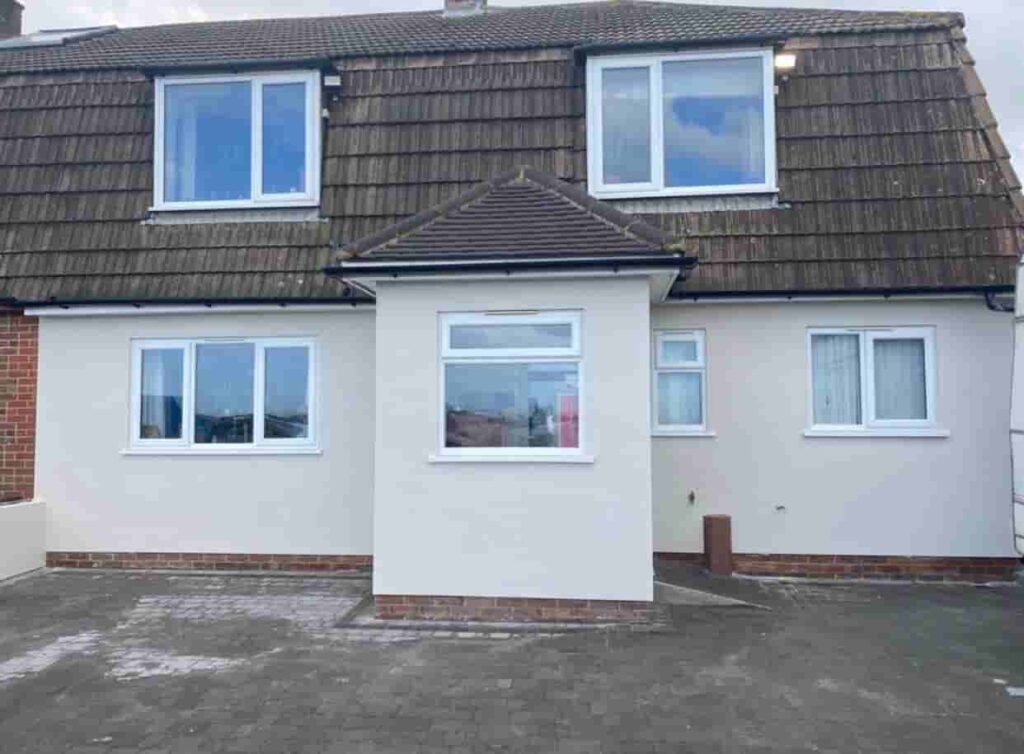Introduction
Modern roofing technology has come a long way, and one of the most versatile and increasingly popular solutions on the market today is the liquid roof covering. Particularly well-suited to flat roofs and challenging waterproofing scenarios, these systems provide a seamless, weatherproof layer that can significantly extend the lifespan of your existing roof.
At Midhurst Roofing Repairs, we’re seeing more and more property owners across Midhurst, West Sussex, opting for liquid systems as an efficient and long-lasting fix. But when exactly is a liquid roof covering the right solution for your roof? Let’s take a closer look.
What Is a Liquid Roof Covering?
A liquid roof covering is applied as a liquid membrane—usually made of polyurethane, acrylic, or similar advanced compounds—which cures to form a continuous, flexible, and fully bonded waterproof layer. It’s particularly useful in areas where traditional roofing materials may struggle to create watertight seals, especially on roofs with multiple penetrations, awkward shapes, or ageing surfaces.
Best Use Cases for Liquid Roofing
Liquid systems aren’t always the first option for every project, but there are certain situations where they’re undeniably the most effective choice:
- Flat or low-slope roofs that are prone to pooling water
- Complex or irregular roof shapes where joints and seams are vulnerable
- Ageing roofs where full replacement isn’t yet necessary
- Roofing overlays where you need to preserve the existing surface
- Quick-drying applications in tight timelines or unpredictable weather
- Green roofs or walkways, as many systems offer enhanced protection and flexibility
Benefits of Liquid Roof Systems
One of the key advantages of a liquid roof covering is its seamless application. Traditional felt or sheet-based systems rely on joins and overlaps—areas where water can eventually find a way in. A liquid application removes that risk, resulting in a fully bonded, joint-free surface.
Additional benefits include:
- Excellent adhesion to a wide range of surfaces
- Highly flexible, allowing for movement and expansion without cracking
- UV and weather resistant, making it suitable for British weather extremes
- Low maintenance, with fewer vulnerable points compared to traditional systems
- Long-term protection, especially when applied by skilled professionals
For both residential and commercial buildings in Midhurst, this can mean less worry and greater confidence in the performance of your roof.
Ideal for Emergency or Interim Repairs
If your roof has suffered sudden damage but a full replacement isn’t feasible immediately, liquid coverings can be a practical interim solution. They offer fast installation and minimal disruption, making them ideal in situations where time or access is limited.
They can also be used in conjunction with other roofing materials, such as reinforcing an area around rooflights, vents, or upstands that are prone to leaks.
Not Always the Right Fit
While liquid membranes have many strengths, they’re not always appropriate for every roofing issue. For example, roofs that are structurally unsound, waterlogged beneath the surface, or require extensive repair work may be better suited for full re-roofing.
That’s why a professional inspection is crucial to determine whether a liquid application is a solution or just a temporary patch.
Conclusion
Liquid roof coverings are an excellent option for a range of roofing challenges, especially on flat or complex roofs where traditional materials fall short. They offer flexibility, durability, and efficiency—all while extending the life of your existing roof and reducing the need for major works.
At Midhurst Roofing Repairs, we’ve helped homeowners and businesses across West Sussex protect their properties with expertly applied liquid roofing solutions. If your roof is showing signs of wear or you’re dealing with stubborn leaks, get in touch with our team today. We’ll help you find the right approach—whether that’s liquid covering or something more structural.
Call us on: 01730 771 382
Click here to find out more about Midhurst Roofing Repairs
Click here to complete our contact form and see how we can help with your roofing needs.

